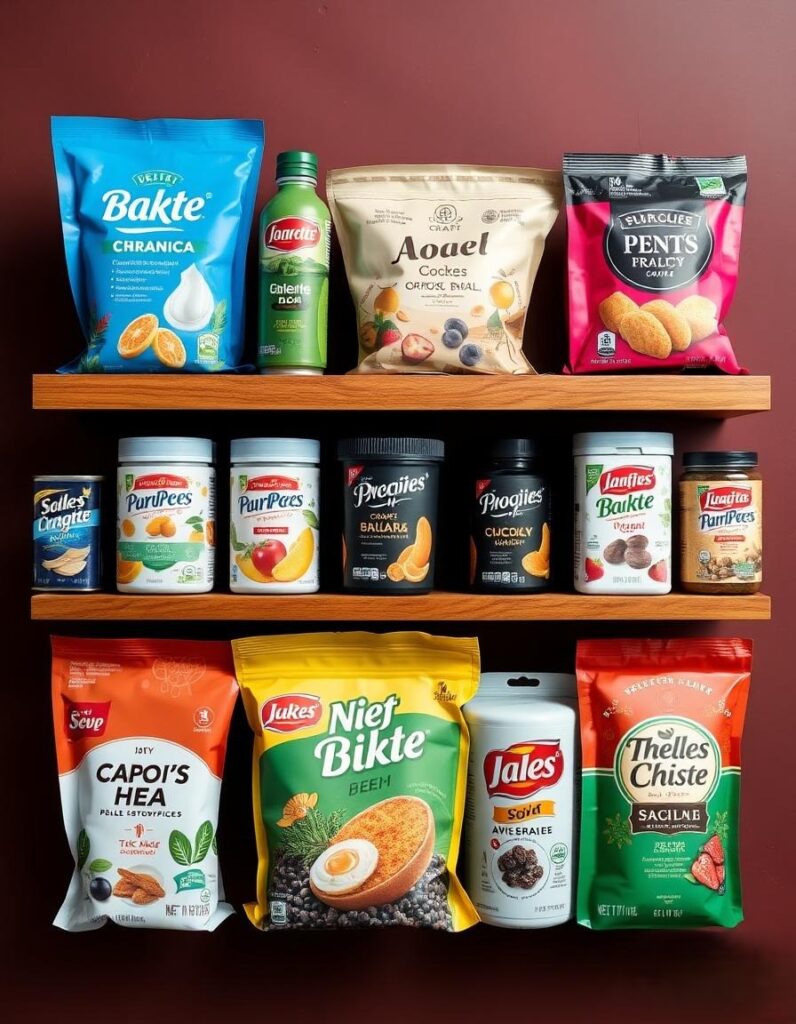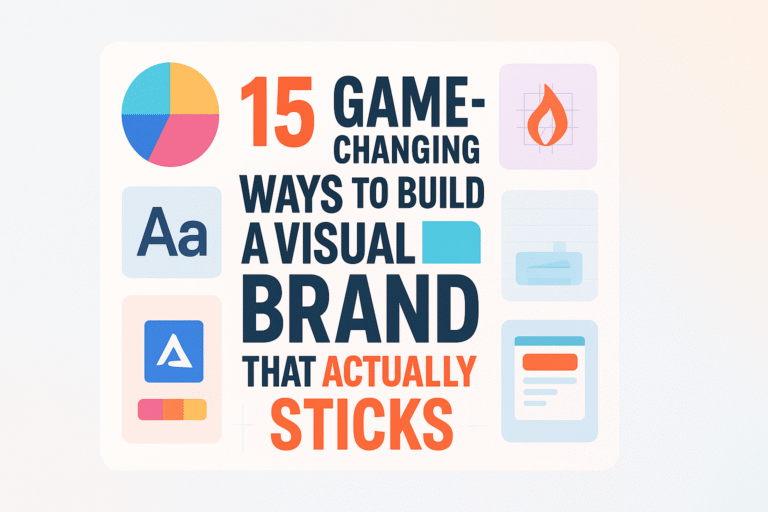
In today’s competitive marketplace, your product’s packaging isn’t just a protective shell—it’s your silent salesperson. From the moment a consumer spots your item on a shelf or unboxes their online purchase, packaging tells your brand story and sets expectations. But navigating the world of packaging and labeling services can feel overwhelming, especially when you’re trying to balance protection, compliance, sustainability, and brand appeal.
I’ve spent years helping brands optimize their packaging strategies, and I’ve seen firsthand how the right packaging decisions can dramatically boost product performance. Whether you’re launching a new health supplement, rebranding your beverage line, or seeking more sustainable options for your cosmetics range, this guide will walk you through the essential packaging and labeling services that could revolutionize your market presence.

1. Custom Packaging Design Services: Creating Your Brand’s Physical Identity
Ever picked up a product simply because its packaging caught your eye? That’s the power of thoughtful packaging design. Custom packaging design services help translate your brand identity into tangible, physical experiences that consumers can touch and feel.
When working with packaging designers, you’ll collaborate to create solutions that:
- Reflect your brand personality and values
- Resonate with your target audience’s preferences
- Stand out distinctively on crowded retail shelves
- Function practically for your specific product needs
- Optimize material usage for sustainability and cost-efficiency
The process typically involves initial consultation, concept development, prototyping, refinement, and final production preparation. Depending on your needs, designers may create anything from minimalist pharmaceutical boxes to luxury rigid packaging with special finishes.
Pro tip: When selecting a packaging design service, look for providers who understand your industry’s unique requirements. A designer experienced with food products will better navigate FDA regulations, while someone with cosmetics expertise will know how to showcase your product’s premium qualities.
2. Contract Packaging Services: Streamlining Production Without the Overhead
Not every brand needs (or can afford) to invest in their own packaging facility. That’s where contract packaging services—often called « co-packers »—come in. These specialized partners handle the physical packaging of your products, allowing you to focus on what you do best: creating amazing products and building your brand.
Contract packaging services typically offer:
- Filling and sealing of products
- Assembly of multi-component products
- Secondary packaging (bundling products together)
- Kitting for special promotions or subscription boxes
- Warehousing and logistics support
For small to medium businesses, contract packagers provide access to professional equipment without major capital investment. For larger companies, they offer flexibility during seasonal peaks or new product launches.
Cost considerations: Pricing structures vary widely, typically based on:
- Volume of products
- Complexity of packaging requirements
- Materials used
- Additional services needed (like design or storage)

3. Sustainable Packaging Solutions: Meeting Environmental Demands
Sustainability isn’t just a buzzword—it’s becoming a business imperative. With consumers increasingly making purchase decisions based on environmental impact, eco-friendly packaging solutions have moved from nice-to-have to essential.
Modern sustainable packaging services include:
- Biodegradable and compostable packaging materials
- Recyclable packaging design and material selection
- Packaging made from recycled content
- Reusable packaging systems
- Plastic-free alternatives
When implementing sustainable packaging, it’s important to consider the entire lifecycle. A truly eco-friendly solution accounts for raw material sourcing, manufacturing processes, transportation impact, consumer use, and end-of-life disposal.
The good news? Sustainable packaging no longer means compromising on quality or appearance. Today’s eco-friendly options can be just as striking and functional as traditional alternatives.
Did you know? According to recent market research, 73% of consumers say they’re willing to pay more for products with sustainable packaging. Making the switch doesn’t just help the planet—it can boost your bottom line too.
4. Smart Packaging Technologies: Adding Digital Engagement
The packaging world is experiencing a technological revolution. Smart packaging technologies are creating new ways for brands to protect products, ensure authenticity, and engage consumers through their packaging.
Popular smart packaging options include:
- QR codes linking to product information, usage tutorials, or brand storytelling
- NFC (Near Field Communication) chips enabling instant smartphone interaction
- Temperature indicators showing if refrigerated products have been properly stored
- Freshness sensors that monitor product quality
- Anti-counterfeiting features to protect brand integrity
Smart packaging bridges the physical and digital realms, extending your customer relationship beyond the purchase moment. For example, a skincare brand might use QR codes that lead to personalized usage guides, while a food company could implement freshness indicators to build consumer trust.

5. Regulatory Compliance Packaging: Navigating Complex Requirements
Different industries face different regulatory landscapes, and non-compliance can lead to serious consequences—from fines to forced product recalls. Regulatory compliance packaging services help you navigate these complex requirements.
Depending on your industry, compliance packaging might address:
- FDA requirements for food and pharmaceutical products
- Child-resistant packaging for potentially harmful substances
- Required warning labels and safety information
- Ingredient and nutritional disclosure
- Environmental regulations regarding packaging materials
Industry-Specific Compliance Considerations
| Industry | Key Regulatory Concerns | Common Compliance Solutions |
|---|---|---|
| Pharmaceuticals | Safety, tampering, dosage information | Blister packs, safety seals, detailed labeling |
| Food & Beverage | Allergen warnings, nutritional facts, ingredient transparency | Standardized nutrition facts panels, allergen highlights |
| Cosmetics | Ingredient disclosure, shelf life, claims substantiation | Period-after-opening symbols, ingredient lists |
| Household Products | Hazard warnings, usage instructions, child safety | Child-resistant closures, warning symbols |
Professional compliance packaging services stay updated on changing regulations across markets, ensuring your products remain compliant even as rules evolve.
6. Automated Labeling Systems: Scaling with Precision
As your production volumes grow, manual labeling becomes increasingly impractical. Automated labeling systems provide speed, consistency, and accuracy that human application simply can’t match.
Modern automated labeling equipment can:
- Apply labels at rates of hundreds or even thousands per minute
- Maintain perfect alignment and positioning
- Adapt to various container shapes and sizes
- Print variable information like batch codes and expiration dates
- Verify label presence and quality through integrated vision systems
For businesses experiencing growth, transitioning to automated labeling often represents a significant efficiency breakthrough. Though the initial investment can be substantial, the long-term labor savings and quality improvements frequently justify the cost.
Implementation consideration: When adopting automated labeling, plan for a transition period where you may need to adjust label designs or materials to work optimally with your new equipment.

7. Secondary Packaging Solutions: Optimizing for Distribution and Display
Primary packaging contains your product, but secondary packaging serves critical functions in distribution, protection, and merchandising. Secondary packaging services specialize in creating solutions that protect products during transport while enhancing retail presentation.
Common secondary packaging options include:
- Retail-ready packaging that converts to displays
- Multi-pack bundling solutions
- Shelf-ready trays and cases
- E-commerce-optimized outer packaging
- Gift and promotional packaging
Well-designed secondary packaging reduces damage rates during shipping while maximizing shelf impact. For retailers, it can decrease stocking time and improve sales per square foot of shelf space.
E-commerce consideration: Online sales require different secondary packaging priorities than traditional retail. With e-commerce, your secondary packaging becomes the consumer’s first physical interaction with your product, making unboxing experience a crucial brand touchpoint.
8. Custom Label Printing Services: Communicating Your Brand Message
Labels are often where regulatory requirements meet brand storytelling. Custom label printing services help you balance compliance with compelling visual communication.
Today’s label printing capabilities include:
- Digital printing for short runs and variable data
- Flexographic printing for larger volumes
- Special finishes like foil stamping, embossing, and varnishes
- Unique label shapes through custom die-cutting
- Specialty materials like clear, metallic, or textured stocks
When selecting label printing services, consider not just the initial appearance but also how labels will perform throughout your product’s lifecycle. Will they withstand moisture in a refrigerator? Resist fading in sunlight on store shelves? Remain legible and attractive until the consumer finishes using your product?
Budget tip: If full custom labels stretch your budget, consider standard label formats with customized elements. Semi-custom approaches can deliver much of the visual impact at a fraction of the cost.
9. Quality Control and Testing Services: Ensuring Performance
Packaging failures can damage more than just your product—they can harm your brand reputation. Quality control and testing services help prevent costly mistakes by verifying that your packaging will perform as expected under real-world conditions.
Comprehensive packaging testing may include:
- Drop testing to simulate shipping accidents
- Compression testing to ensure stacking strength
- Vibration testing to mimic transportation conditions
- Climate testing for temperature and humidity extremes
- Seal integrity testing for consumable products
For regulated industries like pharmaceuticals or food, these tests aren’t just good practice—they’re often mandatory requirements. Even for non-regulated products, investing in thorough testing can prevent expensive recalls and customer disappointment.

10. Packaging Fulfillment Services: Completing the Process
For many brands, especially those selling direct-to-consumer or through e-commerce, packaging fulfillment services provide the final piece of the puzzle. These providers handle not just packaging but the entire process of preparing products for shipment to end customers.
Comprehensive packaging fulfillment typically includes:
- Inventory management
- Product kitting and assembly
- Primary packaging application
- Custom inserts and promotional materials
- Shipping label generation and application
- Carrier coordination and shipment
The rise of subscription box services and e-commerce has driven significant innovation in this sector, with fulfillment providers developing sophisticated systems to handle complex packaging requirements efficiently.
Scalability benefit: Professional fulfillment services can flex with your demand, helping you manage seasonal peaks without maintaining year-round capacity.
Choosing the Right Packaging and Labeling Partners
With so many specialized services available, finding the right packaging and labeling partners requires careful consideration. I recommend focusing on:
- Experience in your specific industry – Providers familiar with your product category will understand unique challenges and requirements
- Scalability – Can they grow with your business from startup to maturity?
- Quality standards – What certifications and quality control processes do they maintain?
- Communication and collaboration style – You’ll be working closely with these partners, so cultural fit matters
- Lead times and reliability – Can they consistently meet your production schedule?
Before committing to any provider, always request samples and references. Nothing reveals quality like seeing actual work and speaking with current clients.
The Future of Packaging and Labeling Services
The packaging and labeling industry continues to evolve rapidly, driven by technological innovation, sustainability concerns, and changing consumer expectations. Looking ahead, we can expect to see:
- Increased integration of digital technologies into physical packaging
- More advanced sustainable materials with improved performance characteristics
- Greater personalization and small-batch production capabilities
- Enhanced supply chain transparency through smart packaging
- Continued automation of packaging processes
Staying informed about these trends can help you make future-proof packaging decisions that position your brand for long-term success.
Conclusion: Packaging as a Strategic Investment
Effective packaging and labeling isn’t merely a production necessity—it’s a strategic investment in your product’s market success. By selecting the right mix of services and partners, you can create packaging that protects your product, complies with regulations, communicates your brand story, and delivers a memorable consumer experience.
Whether you’re launching a new health supplement, rebranding your beverage line, or seeking more sustainable options for your cosmetics range, today’s packaging and labeling services offer solutions to help you stand out in a crowded marketplace.
I’d love to hear about your packaging challenges and successes. What packaging innovations have made the biggest difference for your brand? Share your experiences in the comments below!
Frequently Asked Questions About Packaging and Labeling Services
What are packaging and labeling services? Packaging and labeling services involve designing, producing, and applying packaging materials and labels to products. These services help protect products, provide important information to consumers, and enhance brand appeal through visual and physical elements that represent your brand identity.
Why is professional packaging and labeling important? Professional packaging and labeling ensures product safety during transport and storage, maintains regulatory compliance across different markets, strengthens brand recognition and perception, and significantly improves customer experience and trust. Well-executed packaging can be the difference between a one-time purchase and a loyal customer.
What types of packaging and labeling services are available? The industry offers a wide range of specialized services including custom packaging design, contract packaging (co-packing), secondary packaging solutions, manual and automated labeling, compliance packaging for regulated industries, and emerging smart labeling technologies that connect physical products with digital experiences.
How do I choose the right packaging and labeling service provider? When selecting a provider, consider their experience with products similar to yours, customization capabilities that align with your brand needs, typical lead times, established quality standards and certifications, and their ability to meet both regulatory requirements and retailer specifications. Also evaluate their sustainability practices and technological capabilities.
What are the costs associated with packaging and labeling services? Costs vary significantly based on factors including packaging materials (standard vs. premium), level of customization, order volume (with economies of scale for larger orders), design complexity, and any additional services like design work or automation integration. Most providers can work with you to find solutions within your budget constraints.
Are sustainable packaging and labeling options available? Yes, today’s market offers numerous eco-friendly alternatives including biodegradable materials, recyclable packaging solutions, and labels made from sustainable sources. Many providers now specialize in helping brands reduce their environmental footprint while maintaining product protection and visual appeal.
What regulations affect packaging and labeling? Regulations vary by product type and market, but commonly include safety requirements, ingredient and material disclosure obligations, standardized information formats (like nutrition facts for food), barcoding standards, and environmental compliance measures. Working with knowledgeable service providers helps navigate these complex requirements.
Can packaging and labeling services handle e-commerce requirements? Absolutely! Many providers now offer specialized packaging solutions designed specifically for e-commerce channels, focusing on shipping protection, weight optimization for freight savings, easy returns handling, and creating memorable unboxing experiences that extend your brand story into customers’ homes.
What is smart packaging and labeling? Smart packaging incorporates advanced technologies like RFID tags, QR codes, NFC chips, and environmental sensors to create interactive experiences, provide product authentication, track freshness or condition, and enhance consumer engagement through digital touchpoints connected to physical packaging.
How long does it take to get packaging and labeling services completed? Timelines vary significantly depending on project complexity and provider capabilities. Simple label printing might require just a few days, while completely custom packaging solutions could take several months from initial concept to production-ready materials. Always discuss timeline expectations early in your project planning.
Meta Description: Discover the 10 essential packaging and labeling services that can transform your product’s market presence, from custom design to smart technology integration.


